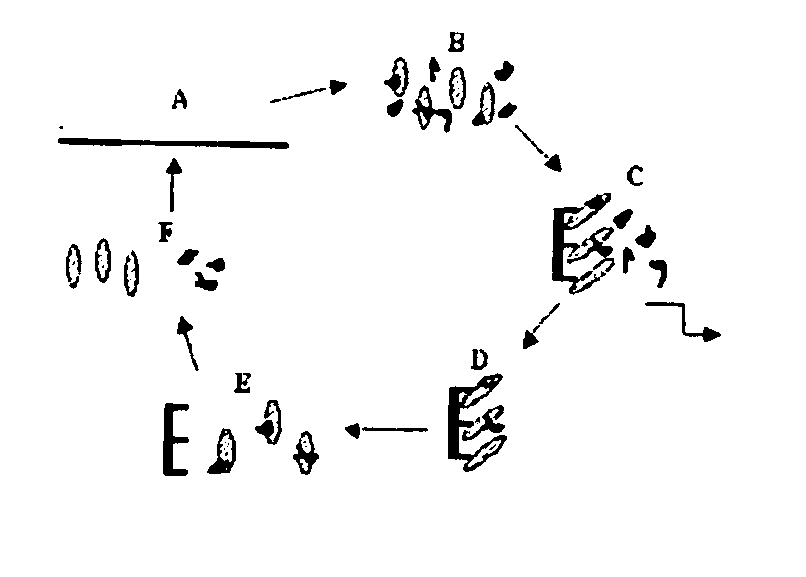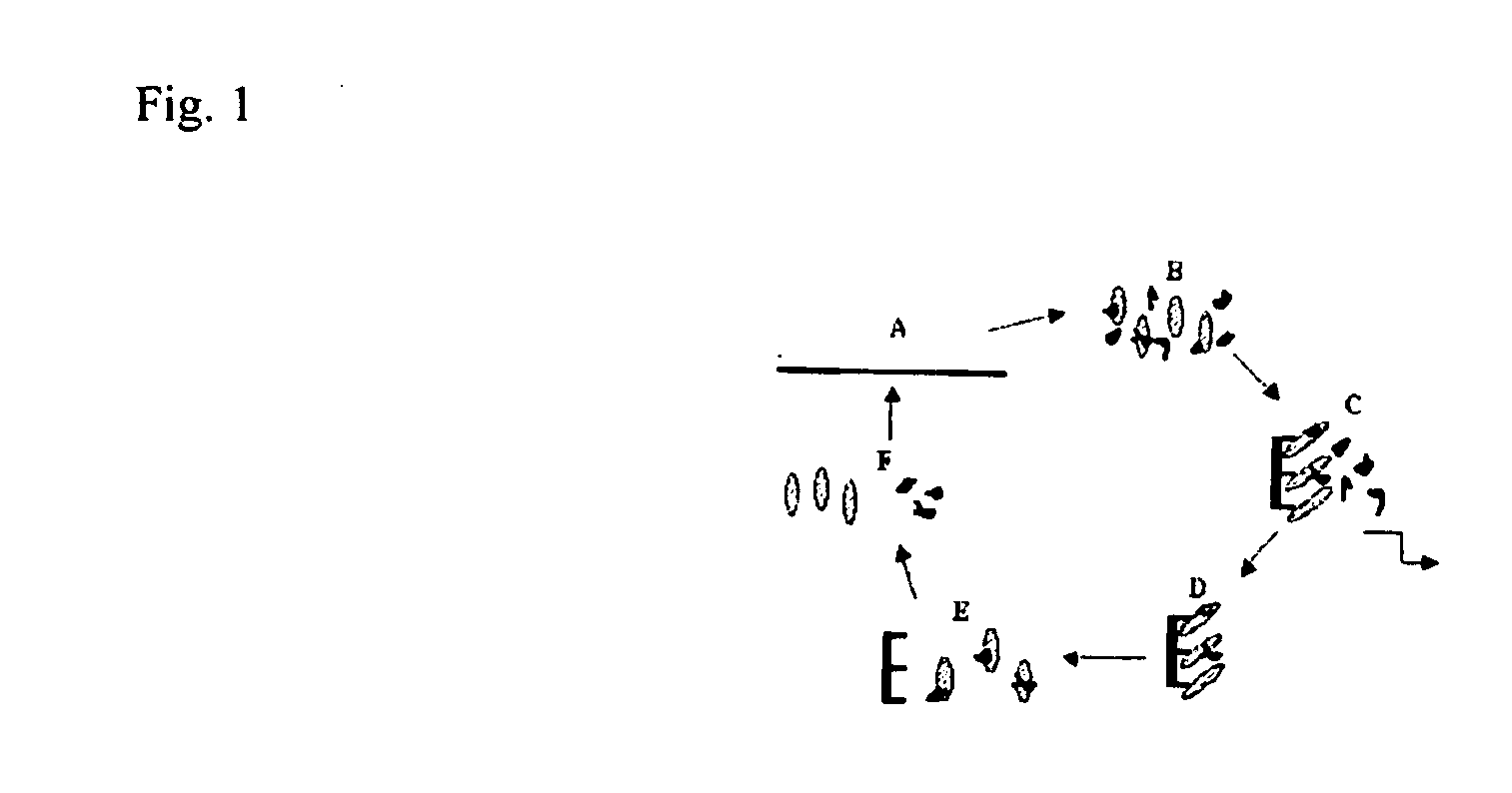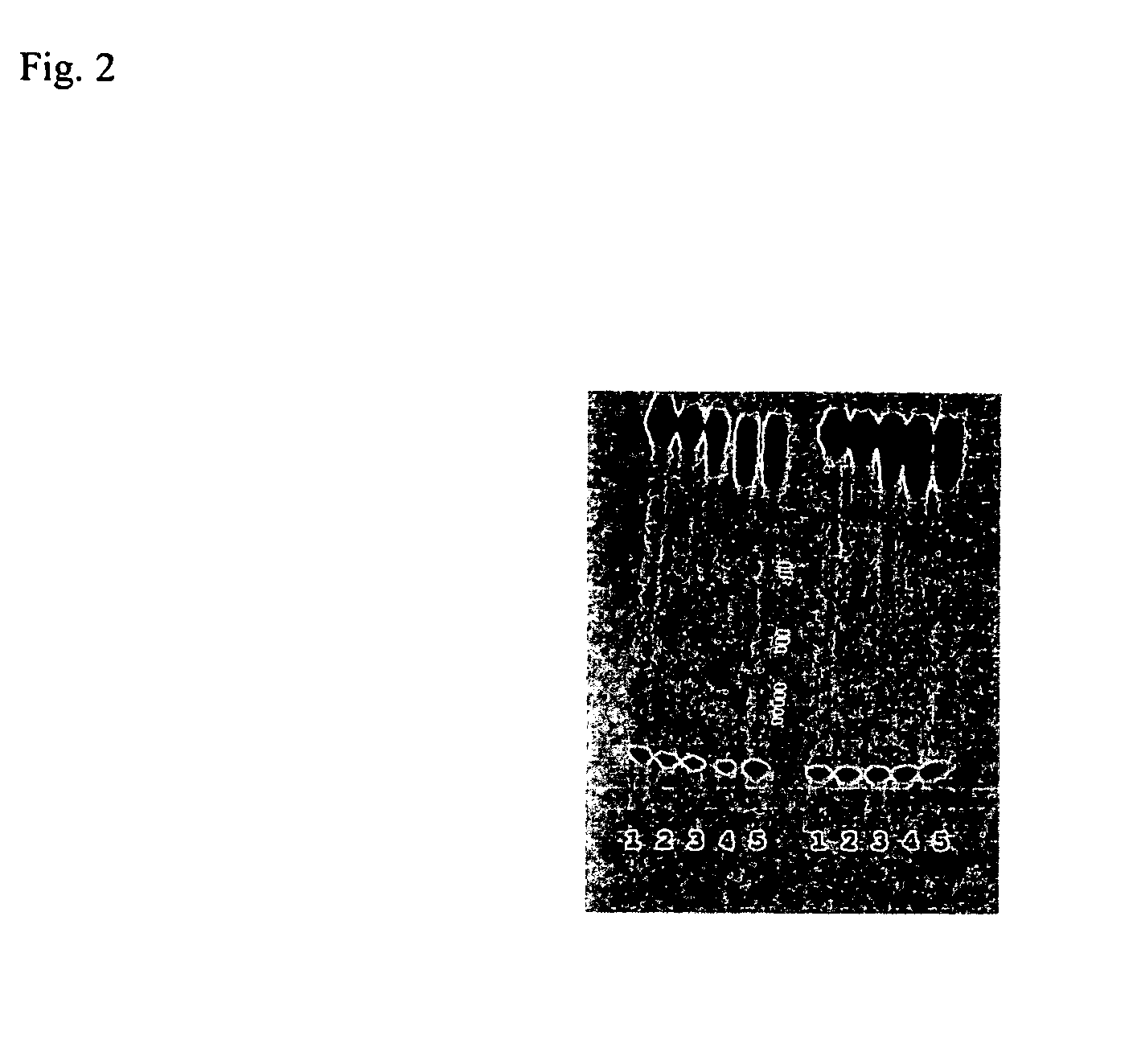Compositions comprising nucleic acid aptamers
a technology of nucleic acid aptamers and aptamers, which is applied in the field of aptamers, can solve the problems of unfavorable pharmacokinetics of radiolabeled intact antibodies or their smaller fragments, inability to use chimeric or humanized antibodies for in vivo detection and therapy, and inability to achieve high affinity binding with a target molecule. to achieve the effect of facilitating high affinity binding
- Summary
- Abstract
- Description
- Claims
- Application Information
AI Technical Summary
Benefits of technology
Problems solved by technology
Method used
Image
Examples
example 1
Validation of the Aptamer Approach
[0072]Experiments were undertaken to establish the usefulness of the aptamer approach in tumor targeting. CEA is a first target. CEA is, arguably, the best-studied tumor epitope and present on the largest number of tumors (For review, see Honig et al., 2000; El-Sadek et al., 2003, the teaching of which is incorporated herein by reference). This tumor-associated antigen is available commercially and there are many antibodies directed to this antigen. Further, a nude mouse CEA-expressing tumor model is available. The LS174T cell line, which grows well in nude mice, was used as a target for anti-CEA antibodies (D. J. Hnatowich et al., Nucl. Biol. Med. 36:7-13, 1992, the teaching of which is incorporated herein by reference). Cells are prepared for inoculation by growth in tissue culture. Cells grown in tissue cultures are used as an in vitro source of CEA pre-animal studies. Antibodies directed against CEA were among the first to be studied in patient...
example 2
Initial Aptamer Libraries
[0077]Chemical composition: The aptamer approach has been successfully applied to DNA as well as RNA libraries. Thus, it appears that earlier concerns that DNA did not possess the structural diversity of RNA has been eliminated. Several technical reasons argue for the use of DNA aptamers libraries. For instance, the use of RNA in direct aptamer selection requires that the RNA can be converted to DNA before PCR amplification, and then the RNA is remade by transcription. The use of DNA eliminates the need for these steps. DNA is also much more chemically stable than RNA and easy to synthesize in bulk quantities.
[0078]The aptamer library used in the initial experiments was a pool of 100-mer ssDNAs (synthesized by Operon Technologies, Alameda, Calif.) with an internal 64 base variable region flanked by two 18 base constant sequences used as PCR primer sites (Left-1 5′-ATACCAGCTTCTTCAATT-3′ [SEQ ID NO. 1], and b-Right-1, 5′-biotin -AGATTGCACTTACTATCT-3′ [SEQ ID ...
example 3
Affinity Purification
[0080]CEA (obtained from Calbiochem) was isolated from the supernatant of culture SW1116 human colon adenocarcinoma cells by affinity chromatography using anti-CEA antibodies. Affinity purification utilizes an immobilized CEA target to capture the highest affinity aptamers. Immobilization can be performed in several ways. The protocol used commercially available concanavalin A (ConA) column. Here, sugar residues present on CEA bind to ConA (S. Daniel et al., Int. J. Cancer 55: 303-10, 1993; David and Reisfeld, 1974, the teachings of which are incorporated herein by reference). The CEA-DNA complex can be eluted from the ConA columns with an excess of alpha-methylmannoside and / or alpha-galactoside. The final double selection protocol that yielded anti-CEA aptamers is shown in FIG. 1.
[0081]FIG. 1. Double SELEX Protocol for Isolation of anti-CEA aptamers. (A) DNA library was amplified and labelled with 32P (B) Labelled DNAs were heated to 90 C. for 5 min, slowly co...
PUM
| Property | Measurement | Unit |
|---|---|---|
| time | aaaaa | aaaaa |
| pH | aaaaa | aaaaa |
| volume | aaaaa | aaaaa |
Abstract
Description
Claims
Application Information
 Login to View More
Login to View More - R&D
- Intellectual Property
- Life Sciences
- Materials
- Tech Scout
- Unparalleled Data Quality
- Higher Quality Content
- 60% Fewer Hallucinations
Browse by: Latest US Patents, China's latest patents, Technical Efficacy Thesaurus, Application Domain, Technology Topic, Popular Technical Reports.
© 2025 PatSnap. All rights reserved.Legal|Privacy policy|Modern Slavery Act Transparency Statement|Sitemap|About US| Contact US: help@patsnap.com



